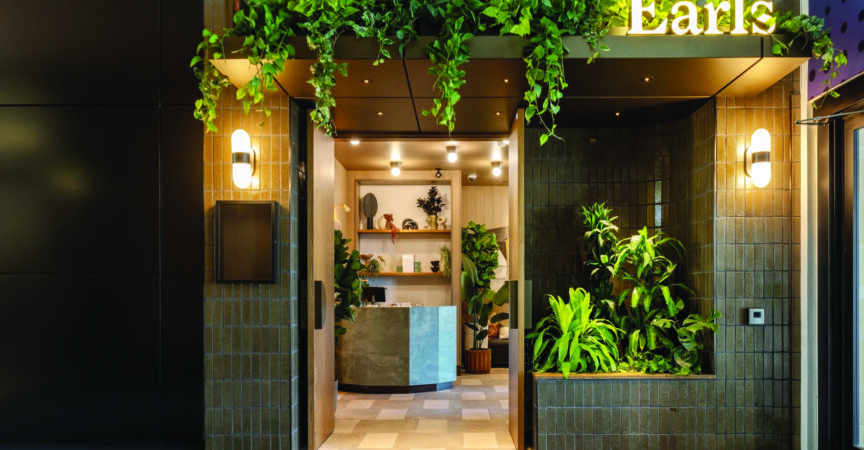Big Little Ideas
For Earl’s, Sustainability is All About the Journey
MENU in conversation with Claudia Vorlaufer, Chief Procurement & Supply Chain Officer, Kimberley Hume,
Senior Interior Designer and Leanne Babcook, Intermediate Interior Designer at Earls Restaurant Group
The first Earls restaurant opened in Edmonton in 1982. Since then, Earls has managed to grow into an empire without losing its foundational values of family and community. Each location is a unique reflection of the community it serves.
When we meet with members of the Earls Environmental Committee, It’s clear that engagement and belonging are successful components of the restaurant group’s culture.
Claudia Vorlaufer, Chief Procurement and Supply Chain Officer has been with Earls for 19 years and summarizes the Earls operating culture and thinking that led to the creation of the committee. “As an organization, I think part of Earls’ fabric is about always trying to do better. When we know better, we do better. We began to address issues like trans fats earlier than others, but we didn’t necessarily feel the need to talk about it because we did it because it was the right thing to do, not a promotional opportunity. Sustainability has been an aspect of our business that has always been there, but not with consistency or as a true lens for the organization. It has always landed in procurement and supply chain in some way or another, from tracking energy consumption working with BC Hydro or Fortis or trying to compost more and reduce waste. We’ve had multiple programs in play. I think what the Earl’s Environmental Committee has been formed to do is help create a new lens through which we make decisions for the company.”
The team notes that timing played a large role in earning the attention and momentum of the leadership and extended team. “It took us a good eight months to get to a place where we could bring our plan forward to our executive group in order to create our first Business Resource Group (BRG),” Kimberley Hume, Senior Interior Designer, recalls. “Timing was so key. As Claudia said, environmentalism has always occurred at Earls, but it became apparent as we went on this journey that environmental sustainability was living mainly with individuals who had passion for it or within a particular department where it was ingrained in the work they do, like Claudia’s. Over my nine years at Earls, I’ve been part of several groups that never really gained traction because the timing wasn’t right, but now it’s part of the natural growth and evolution of Earls as a company.”
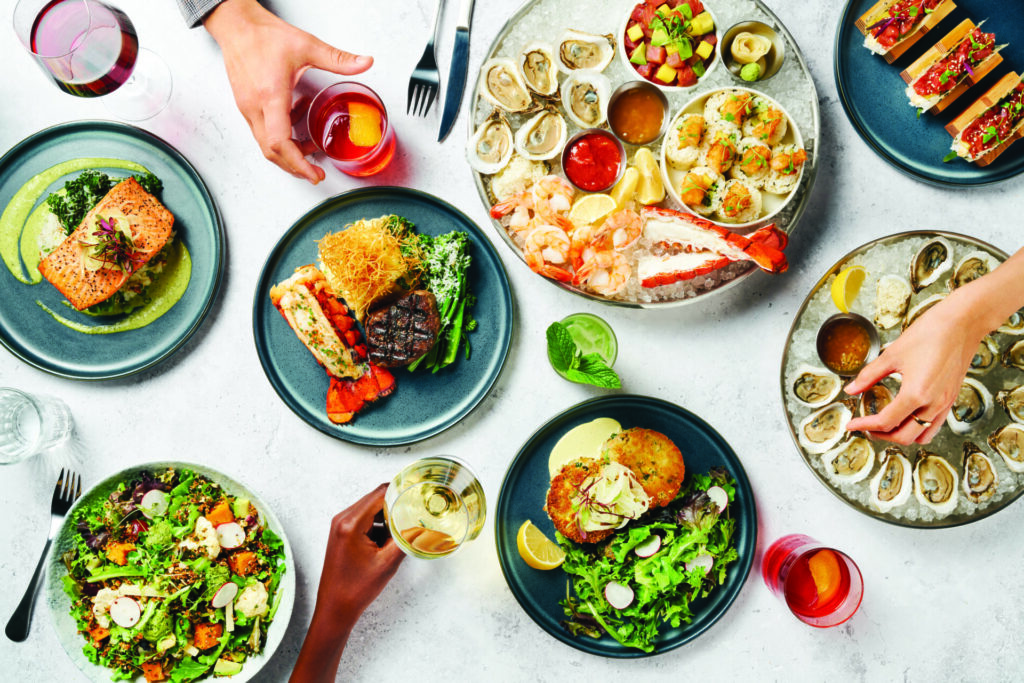
Having reached a point of clarity and resolve around its social and people impact, it was a natural and intuitive evolution for the company to broaden its focus on the planet and environment. Hume also acknowledges that highly visible and galvanizing social justice incidents and movements including the murder of George Floyd and the pandemic compounded the urgency of culture-impacting ideas and initiatives. “It felt that everything that happened around us at that time set us, as a company, down a path where we’re more mobilized to create social equity, have these conversations and formalize employee resource groups,” says Hume. “We all cared about these things before, but now we’re mobilized, organized and talking about them. We’ve assembled groups and we’re so much more intentional and loud about it. Including everyone in the conversation has been really key for us.”
Coincidentally, the seeds of Earls successful approach to ingesting and centring values-based operational thinking were sown during the pandemic. Hume had been part of the COVID-19 reopening committee which had representatives from every Earls department. “We’d never had to do this before, so we asked ourselves as a group, “How do we reopen restaurants?” and “How do we make sure people are safe?” The value we got from bringing unique people and perspectives together was so key and gave us a clear and effective model we could adapt for this work.”
Earls head office staff worked in an inter-disciplinary fashion to develop ways to keep the business running and as many staff as possible on the payroll. “When the going gets tough, we get creative…really creative,” Vorlaufer says. “We pivoted the business into grocery stores and we’ve now launched products into retail for the first time ever. We had these small subcommittees that met almost daily to figure out where and how we needed to adapt. At one point, one of our suppliers had about 122 cases of chopped romaine lettuce in BC they were going to have to discard because there were no buyers. They asked if we could do anything with it, and we gave each of our customers a free Caesar salad. It’s a part of the Earls spirit to take a tough or tricky situation and find a way to grow from the experience. That time was so tough for the industry, but it really had us focus on our people and what’s important.There were so many social issues on the frontburner at that time, but those led to
the birth of this initiative.”
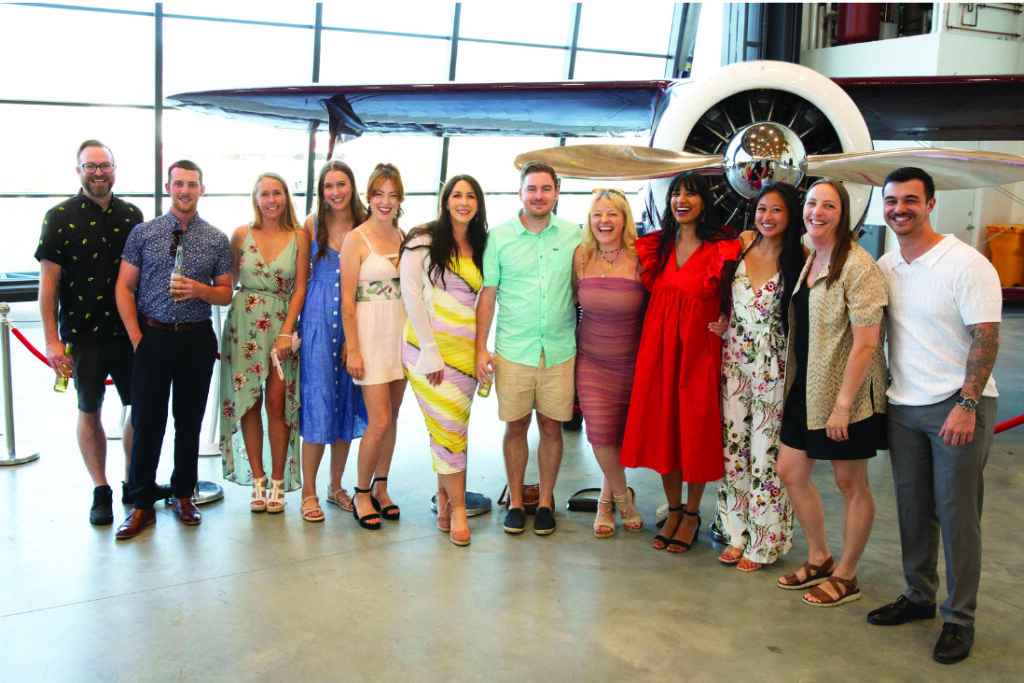
The formal design of the committee and its proximity to established business processes and rhythms has been central to its success and effectiveness. Unlike grassroots or “fringe” employee projects, the model was the same as any other priority business initiative. “It’s not just people with passion pursuing a goal,” says Vorlaufer. “What’s the difference between an Employee Resource Group (ERG) and a Business Resource Group (BRG)? A BRG is fueled by business initiatives and this is where it needs to live because where it sometimes dies is when the implications to the viability of the organization exceeds the potential positive impact. Sustainability is a very broad topic that has to encompass people, prosperity and planet. Our success came from timing, our model and gaining full alignment from the executive team. It was a gap that needed to be filled, and here we are today.”
As a future-committed company, Earls has prioritized sustainability and social impact, moving them from “nice-to-haves” or “extras” to core business endeavours. Hume and Leanne Babcook, Intermediate Interior Designer, approached the COO in search of an executive sponsor, and Vorlaufer was a natural fit. “We had a couple of other founding members,” Hume recalls, “but the first body of work was determining how to form the group and getting the buy-in from the entire executive team to provide representatives from every part of our organization. That alone was the first year of our work, but by the time we got to the presentation stage, support was unanimous.”
The BRG had the green light, but where to focus their efforts and what to tackle first? They needed to recruit like-minded new members from across the Earls enterprise, so they started to seed the idea with a positive “whisper campaign”. “There was a lead-up to actually creating the committee,” Babcook says. “As we started to gain a little more momentum and gather members from each department, the chatter throughout the office started to get people really excited and I think that’s one of the reasons it was so easy to attract other members. The same approach has brought in ideas from other people that have led to the projects we’re working on now and hope to work on in the future.”
From the outset, the team recognized the risk of getting lost and losing momentum in “big work” or chasing the massive reporting that overshadows the real, impactful work. The team wanted to make an impact in every Earls restaurant, but where to start?
Hume and Babcook had attended a Habitat for Humanity session during Design Week on “unbuilding” in the restaurant industry, learning how to decrease waste in construction design, processes and materials. “It really inspired us,” says Hume. “It set us on the path of creating this team made up of people from every part of our company.”
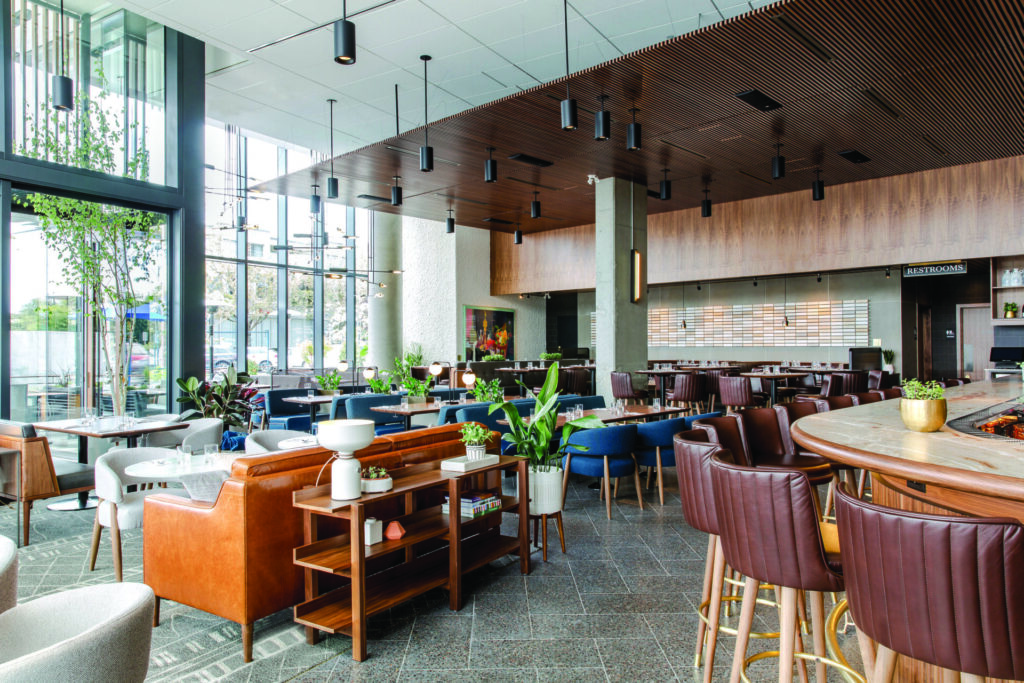
With five new stores opening this year, the committee embraced the opportunity to assess their development and construction practices around waste management and reduction and recycling. “When we get our merchandising items into the new store, we are very intentional about all of the packaging materials,” says Hume. “We reuse or recycle not just the cardboard boxes, but the plastic and other packaging within them. We reuse the difficult-to-recycle packaging materials in our planters and pots so, when you see our beautiful foliage or faux or even real trees, know that the planter is full of styrofoam underneath. We try and divert as much of that waste as possible and we bring in experts to recycle any soft plastics and foams that can’t be re-used on site. It’s easy to recycle the cardboard and just put the plastic in the garbage—we’re trying to re-use or recycle every single piece of waste we’re responsible for.”
The committee also reviews supplier contracts and sets firm expectations with general contractors on how waste should be managed on construction sites. “You always end up ordering a certain amount of extra tiles or material to make sure there’s enough for cutting and matching, but it’s tragic when you see full tiles in a trash bin,” Hume notes. “We’re exploring the possibilities and starting to audit and get tighter on our sites. “Making the easy things hard” has been a kind of a new catchphrase for me, in terms of how to start thinking about these things.”
Since the inauguration of the committee and their early projects, the team has been regularly receiving calls from across the organization with ideas on where they could apply the same critical thinking to improve sustainability across not only operations, but the supply chain. Earls employees were realizing the company had sufficient scale to influence supplier packaging design, beginning with their oyster cups. “Our oyster cups arrive individually packaged, but we don’t need them to be,” says Vorlaufer. “Every single piece of cutlery we order comes in its own wrapper. I would get all of these random emails from stores pointing out ways we could reduce packaging. We’ve always had a piece in our procurement to supply chain RFP documents that identifies environmental considerations. It essentially says, “Hey, if we’re down to two suppliers with comparable programs, we’re going to lean toward the one that is more environmentally responsible and does more for the planet. Now, looking at the packaging is part of our primary process. We’ve just introduced a new napkin at our stores. It’s as compostable as the previous one, but we’ll be using less because they’re made of a better fibre. The supplier was packing them in smaller units than we’d previously been receiving, which would have meant more shipping and more packaging to do that. So, we went back to the supplier and asked that they pack them in larger boxes to reduce the waste around the product. We’re really focused on using less from beginning to end.”
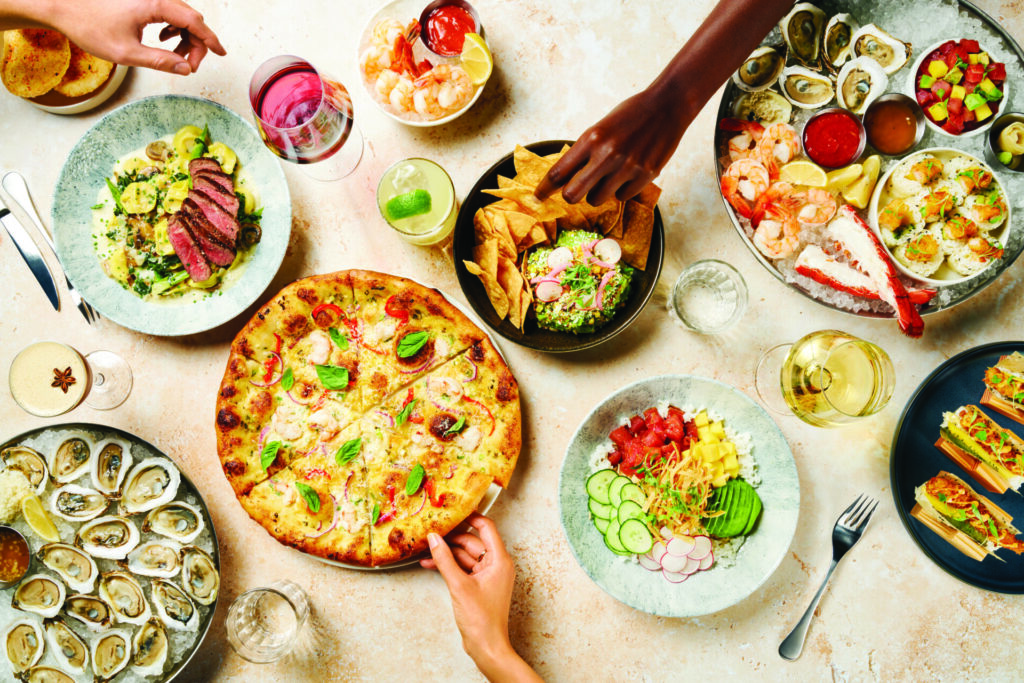
Getting in on the ground floor of major organizational sourcing decisions is another important success factor, a lesson the resource group members recently learned. Earls was in the midst of making a significant sourcing change and, though the team jumped at the chance to research alternatives and made a presentation, it came too late to implement. “It was disappointing for the committee,” Vorlaufer admits, “but we know this is not easy work. The work we did, while it came too late in this instance, has led to positive changes to our process. Getting involved at the right time and having representation from across the organization makes a huge difference.”
There is no plan on the horizon to market the committee or its efforts to consumers — for now, this work is strictly internal and connected to the people and planet components of the business strategy. There’s also no overarching profitability KPI on the committee’s work at this time. Vorlaufer acknowledges environmental sustainability initiatives often cost money before they return dividends. “If you save the right amount of money, it gives you money to spend on other things. What we’re trying to do is find the right balance. We are not interested in greenwashing or mislabeling projects when the motivation is actually profit from the start. I believe everything in business has to have an ROI, but that ROI does not always have to be profit.”
Later this year, the team plans to conduct a full audit, heading down to one of the stores to receive and unpack an entire order to explore additional opportunities to reduce packaging waste. While this may sound like a chore to some, the team’s enthusiasm is palpable and highlights the value and effect of this work on the Earls workplace culture. Participation and the incremental success of these early sustainability-focused projects has increased job satisfaction for the founding committee members. “The amount of inspiration, pride and even joy I feel leaving our quarterly committee meetings fuels me,” says Hume. “I have a very cool job as a designer, but working at a place that is committed to something greater than ourselves fuels a new level of passion for me. I think it’s a no-brainer that there’s real benefit to the company in this work. There’s been a hunger for it, and people’s happiness matters. People want to work for a company that cares about their impact and that cares about happiness. People want to work at a place that cares about those things and will stay at a place that cares about those things.”
Babcook notes that a large number of Earls’ hourly partners are members of Gen Z, a demographic with strong environmental values. “The younger generation is looking to work with companies with values that align with what they truly believe in. It’s inevitable that environmental sustainability is going to be something potential employees are looking at when they’re looking for work. That’s not necessarily a huge driver behind the work we’re doing, but it’s definitely something we’ve thought about. Being Gen Z myself, I think it’s a really cool opportunity.”
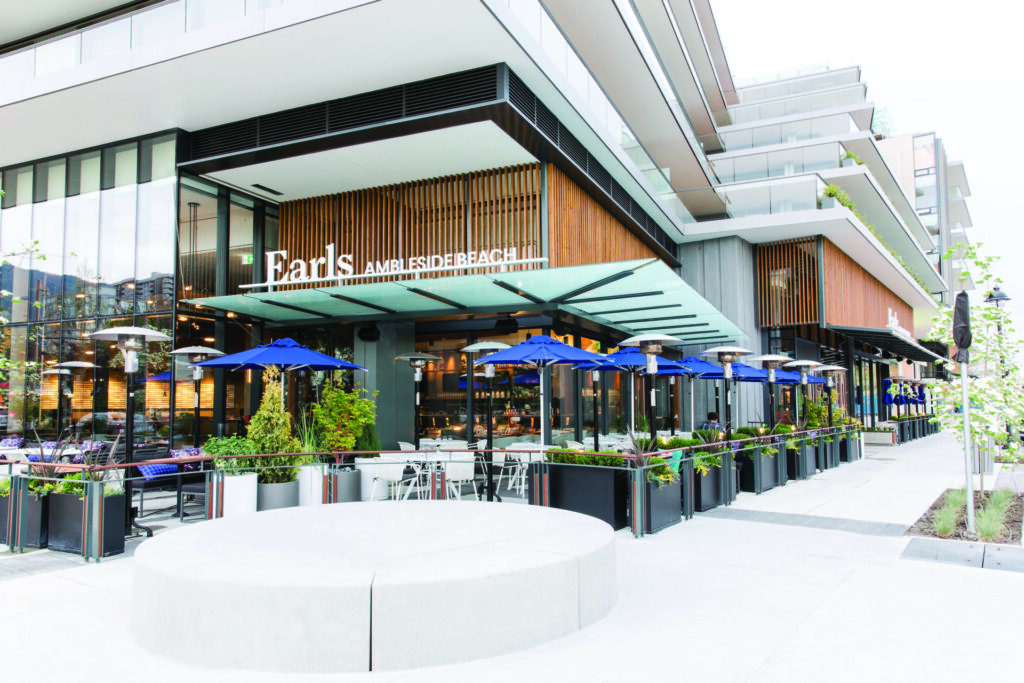
Having the opportunity to engage with different people and departments has expanded Babcook’s perspective within the company. “I really love getting on calls with the whole committee and interacting with people in different departments to catch up on what they’re working on. Just getting a view into their day-to-day makes a difference to my own work.”
As a senior executive, Vorlaufer acknowledges that this work has given her a new lens on sourcing and procurement. She recalls a recent business review meeting with a buyer where there’d been discussion around using a larger pack size for avocados and they were trying all these things. I was sitting there thinking, “Oh wow, so we’re using a bigger box but because of that decision, we’re using the same box that was used at source, so we’re not bringing a new, virgin box into the mix anymore. Not only is this great in terms of a bigger pack size, but there’s also a further opportunity to reuse packaging from the start of this product’s journey instead of recycling the original box and repacking the avocados into new, smaller boxes with pretty branding on them. I wouldn’t have had that lens before. That’s the impact.”
People and companies can be overwhelmed by the “big stuff,”, Vorlaufer admits. “Some people think that to have an environmental sustainability program you need all this big stuff, and we’ll absolutely get there. But we’ve started with learning how to make change and start a movement right now. That’s what’s made everyone excited. It’s made it come to life and it feels really purposeful. What we’re uncovering is that there are so many close-by opportunities and simple things we can do every day that will have a significant effect on how we show up on recycling and using less. There’s so much low-hanging fruit.”
Sharing Earls’ journey toward embedding sustainability thinking into their operations with the industry at large is important to the committee members. “We all have so much to learn in this space, says Vorlaufer. “At Earls, when we know better, we do better; we’re always evolving. We want to share our learnings with others in the industry because let’s face it, aspects of our industry are inherently wasteful and we have such a huge opportunity to reduce our wasteful practices. Gathering different perspectives and ideas has generated real ingenuity and new thinking. We can do that as an industry.”





